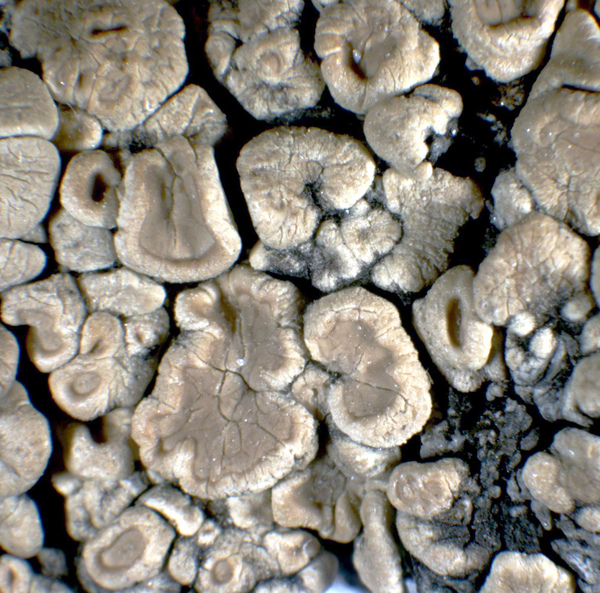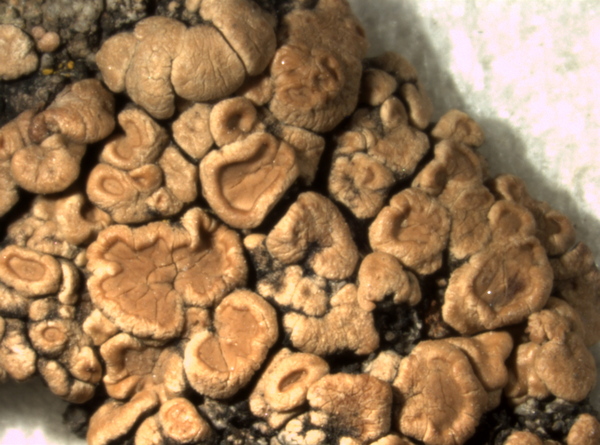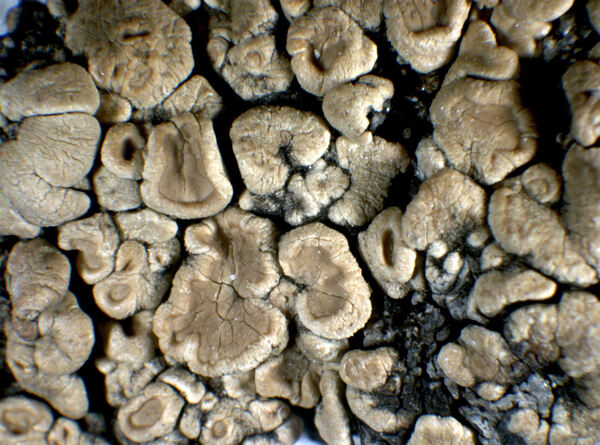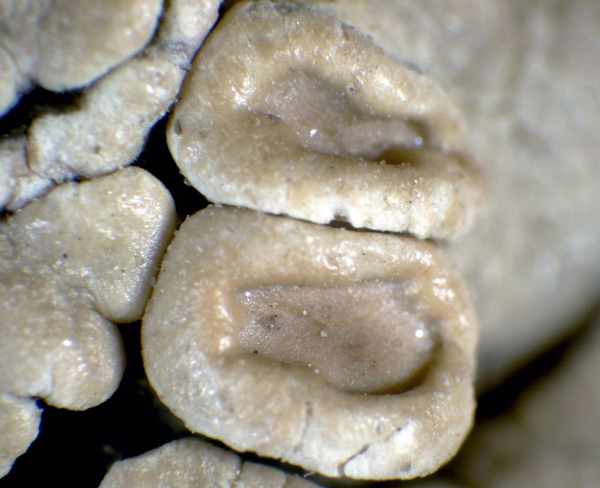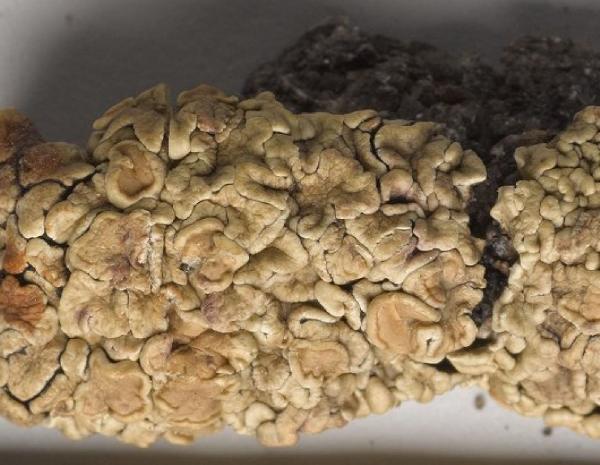Lecanora rhizinata Poelt, Barreno & V.J. Rico
Lazaroa, 5: 255, 1983.
Synonyms:
Distribution: C - Sar.
Description: Thallus crustose-subsquamulose, episubstratic, 5-30 mm wide, yellowish green, rarely yellowish brown in sun-forms, often with pinkish patches in the damaged parts, the areoles/squamules 0.5-3.5 x 0.6-2.4 mm, 0.5-1 mm thick, umbilicate, usually lobed, concave to convex, at first smooth, but soon turning rugose; lower surface at first whitish, then brown to black, with branched, up to 10 mm long, 0.1-0.4 mm wide, blackish, pale brown to pinkish rhizinose strands. Upper cortex 90-380 μm thick, prosoplectenchymatous, the upper part 30-60 μm thick, yellowish brown, filled with 0.5-4 x 0.5-1.5 μm large crystalline granules, with an epinecral layer, lower part colourless, without granules; algal layer discontinuous; medulla 30-45 μm thick, prosoplectenchymatous; lower cortex absent. Apothecia lecanorine, 1-4.5 mm across, often covering a large part of thallus, at first semi-immersed, then sessile and constricted at base to subpedicellate, with a slightly concave to slightly convex, yellowish brown to brown disc and a persistent, often flexuose thalline margin. Thalline exciple 500-650 μm thick laterally, corticate, the outer part filled with crystals; proper exciple 15-20 μm thick; epithecium yellowish brown, 10-15 μm high, with small crystals (0.5-4 x 0,5-1.5 μm); hymenium colourless, 45-60 μm high, the upper part with sparse small crystals; paraphyses strongly coherent, sparingly branched and anastomosing, 1.5-2 μm thick at mid-level, the apical cells 3-4.5 μm wide; hypothecium 70-135 μm high, prosoplectenchymatous. Asci 8-spored, clavate, very thin-walled, with a K/I+ blue, tall tholus penetrated by a faintly amyloid apical cushion, the wall K/I-, surrounded by a blue outer layer, Lecanora-type. Ascospores 1-celled, hyaline, ellipsoid to broadly ellipsoid, rather thick-walled (8-)9.5-12.5(-14.5) x (4.5-)5-7(-7.5) μm. Pycnidia colourless, immersed. Conidia needle-like, slightly curved, 17-28 x 0.5-1 μm. Photobiont chlorococcoid. Spot tests: cortex and apothecial margin K- or K+ pale yellow, C-, KC+ pale yellow, P-; medulla K-, C-, KC-, P-; pinkish parts K + reddish violet. Chemistry: usnic acid, plus an unidentified pigment in the pink-coloured parts. Note: a very rare species growing on easily exfoliable metamorphic rocks in open, wind-exposed and snow-free sites in upland areas, reported from Central Spain, Southern France and Sardinia. For further details see Poelt & al. (1983) and Roux (2009).
Growth form: Crustose
Substrata: rocks
Photobiont: green algae other than Trentepohlia
Reproductive strategy: mainly sexual
Commonnes-rarity: (info)
Alpine belt: absent
Subalpine belt: absent
Oromediterranean belt: extremely rare
Montane belt: extremely rare
Submediterranean belt: absent
Padanian area: absent
Humid submediterranean belt: absent
Humid mediterranean belt: absent
Dry mediterranean belt: absent
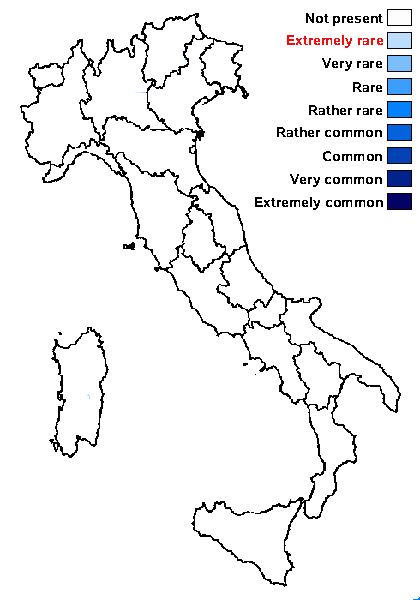
Predictive model
Growth form: Crustose
Substrata: rocks
Photobiont: green algae other than Trentepohlia
Reproductive strategy: mainly sexual
Commonnes-rarity: (info)
Alpine belt: absent
Subalpine belt: absent
Oromediterranean belt: extremely rare
Montane belt: extremely rare
Submediterranean belt: absent
Padanian area: absent
Humid submediterranean belt: absent
Humid mediterranean belt: absent
Dry mediterranean belt: absent

Predictive model
 INDEX FUNGORUM
INDEX FUNGORUM
 GBIF
GBIF
